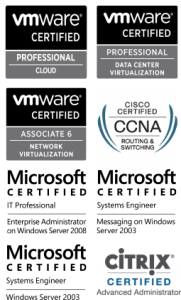The ‘Group Policy Results Wizard’ is a great way to help troubleshoot any issues with Group Policy Objects (GPO). Here is how you run it on Windows Server 2008 R2.
Event Log Error Event ID 23 in Windows Server 2008
Have you ever experienced a stream of Event Log errors using Windows Server 2008?
I have, and they’re really annoying. They typically look like this:
The event logging service encountered an error (res=5) while initializing logging resources for channel PowerShell.
Cisco Command Line Shortcuts
I’m a sucker for shortcuts, so I try and use them whenever I can to increase my productivity.
I’ll add to this list as and when I find useful Cisco command line shortcuts.
- Move cursor to start of line:
CTRL + A
- Move cursor to end of line:
CTRL + E
- Erase current line:
CTRL + U
- Erase a word:
CTRL + W
- Run command and exit config mode:
CTRL + Z
- Just exit config mode:
CTRL + C
- Break:
CTRL + SHIFT + 6
- Suspend telnet/ssh session:
CTRL + SHIFT + 6, x
Initial configuration for Cisco routers
There are a few things I always do first when configuring Cisco routers:
- Backup current IOS image file – just in case something goes wrong in the next step.
- Update to latest IOS version – cos everybody just loves those new bells ‘n’ whistles right?!?
- Initial configuration – useful commands to make life easier.
How to configure the VMware vCenter Virtual Appliance
Previously I explained How to install the VMware vCenter Virtual Appliance. Today we’ll look at configuring the VMware vCenter Virtual Appliance.
How to install the VMware vCenter Virtual Appliance
The VMware vCenter Virtual Appliance is a SUSE Linux Enterprise Server (SLES) VM, preconfigured so you don’t have to install a single thing extra…well, apart from the VM itself!
How to quickly re-install applications after system failure
The Problem
You’ve carefully been running full backups of your computer for ages, using the built-in Windows Backup tool in Win7.
An unrecoverable crash occurs, but you’re not scared as you have multiple backups with multiple restore points; if anything, you’re spoilt for choice with restore options…or are you?!
Using data and time in batch files
If you need to use the current date and time within batch files, I find this code very useful:
%date:~-4,4%-%date:~-7,2%-%date:~-10,2%#%time::=-%
For instance, say you’re moving or copying a file somewhere and you want to rename it with today’s date and time, you could set a filename variable like so:
set filename=%date:~-4,4%-%date:~-7,2%-%date:~-10,2%#%time::=-%
This would output a string with the format yyyy-mm-dd#hh-mm-ss.ms (ms being micro-seconds):
2012-01-19#13-04-27.17
To add the computer name to the string use:
%computername%#%date:~-4,4%-%date:~-7,2%-%date:~-10,2%#%time::=-%
How to find out which servers hold the FSMO roles in your forest/domain
Just a quick tip on finding which servers hold the Flexible Single Master Operations(FSMO) roles.
Enter the following at the command prompt from any Domain Controller:
for %x in (schema name infr pdc rid) do dsquery server -forest -hasfsmo %x
An explanation of the roles and how to transfer them can be found here: http://support.microsoft.com/kb/324801
Edit: An even quicker way is to type:
netdom query fsmo
Using 32-bit ODBC drivers on Win7 64-bit
As we slowly migrate away from Windows XP to Windows 7 at work, the world seems to take great pleasure by presenting weird and wonderful issues for me to fix.
The latest one was getting 32-bit ODBC drivers to work on a Win7 64-bit PC.
[Read more…]

